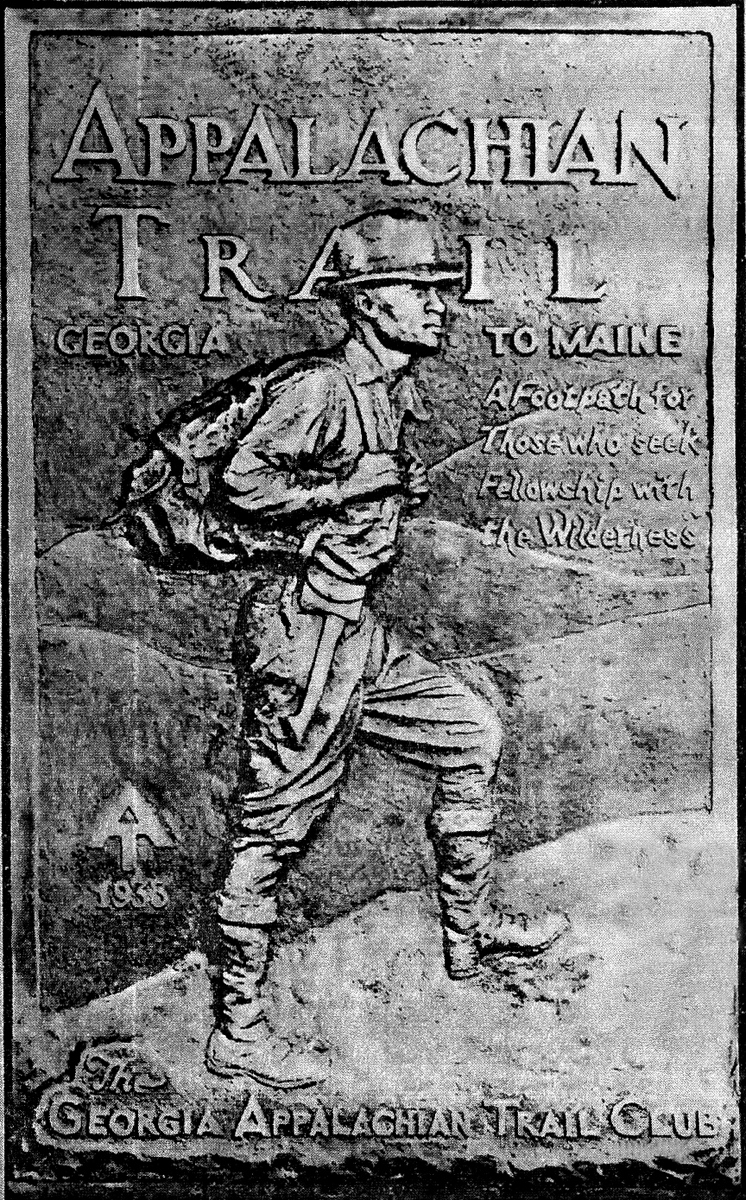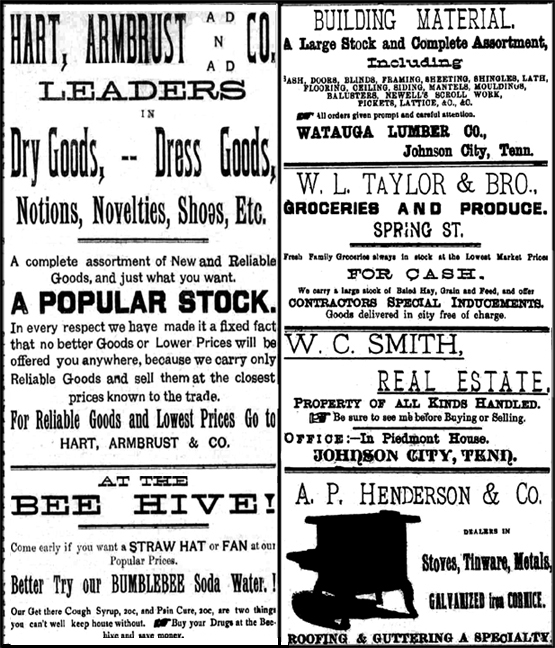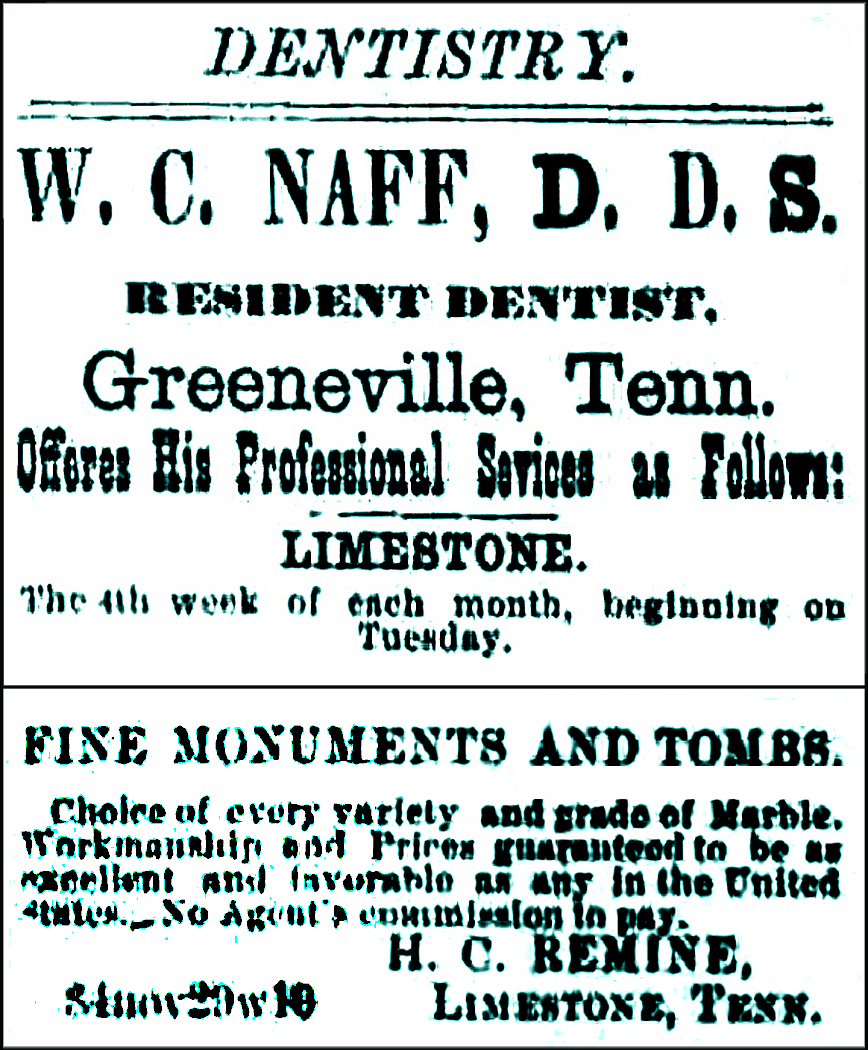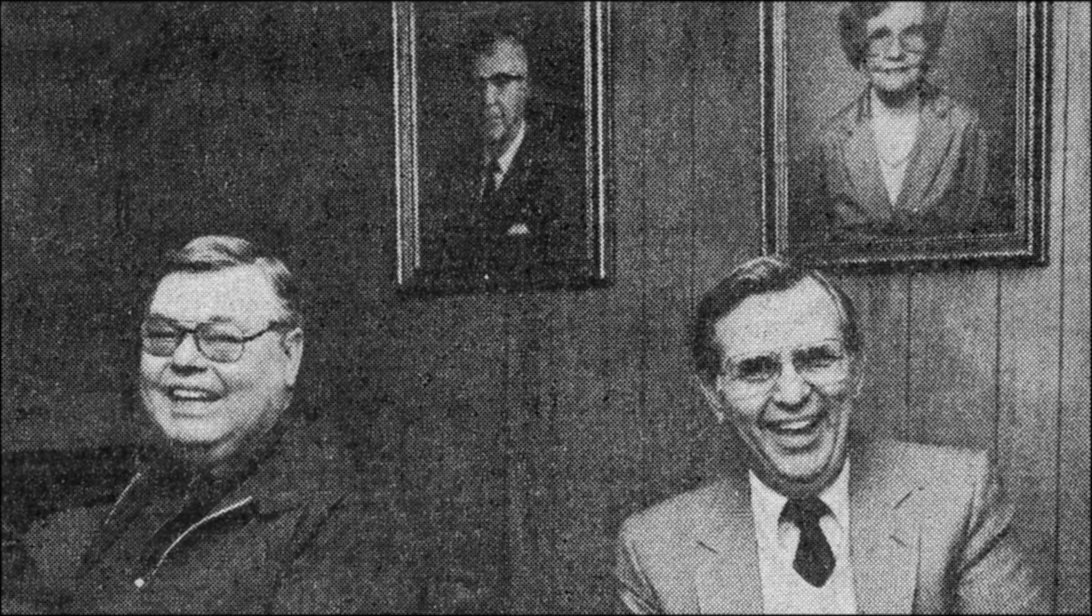This column is the third of three dealing with a few early 1900 city enterprises. I have attempted to identify the location of each, plus (in parenthesis) some later businesses that occupied that same site. Slightly paraphrased comments are in the present tense.
K.P. Jones & Company
Located at Buffalo and Cherry streets: Johnson City can boast of having a number of prominent lumber yards, among which is K.P. Jones & Co., who are manufacturers and dealers in building supplies and building material of all kinds. A complete line of paint, oils, sash, doors, siding, ceiling, flooring, laths and shingles is available. Hemlock framing is a specialty of the business. The yards and offices of this prosperous concern comprise three adjoining yards at their site.
The members of the company are K.P. Jones and J.E. Brading, two robust and wide-awake business men. The Lumber Company opened its business in February 1902, and since the first of January, 1903, a gain of 100 percent, has been enjoyed in the volume of business. The firm's members are local men and take an active interest in our city welfare.
Johnson City Coal and Lumber Company
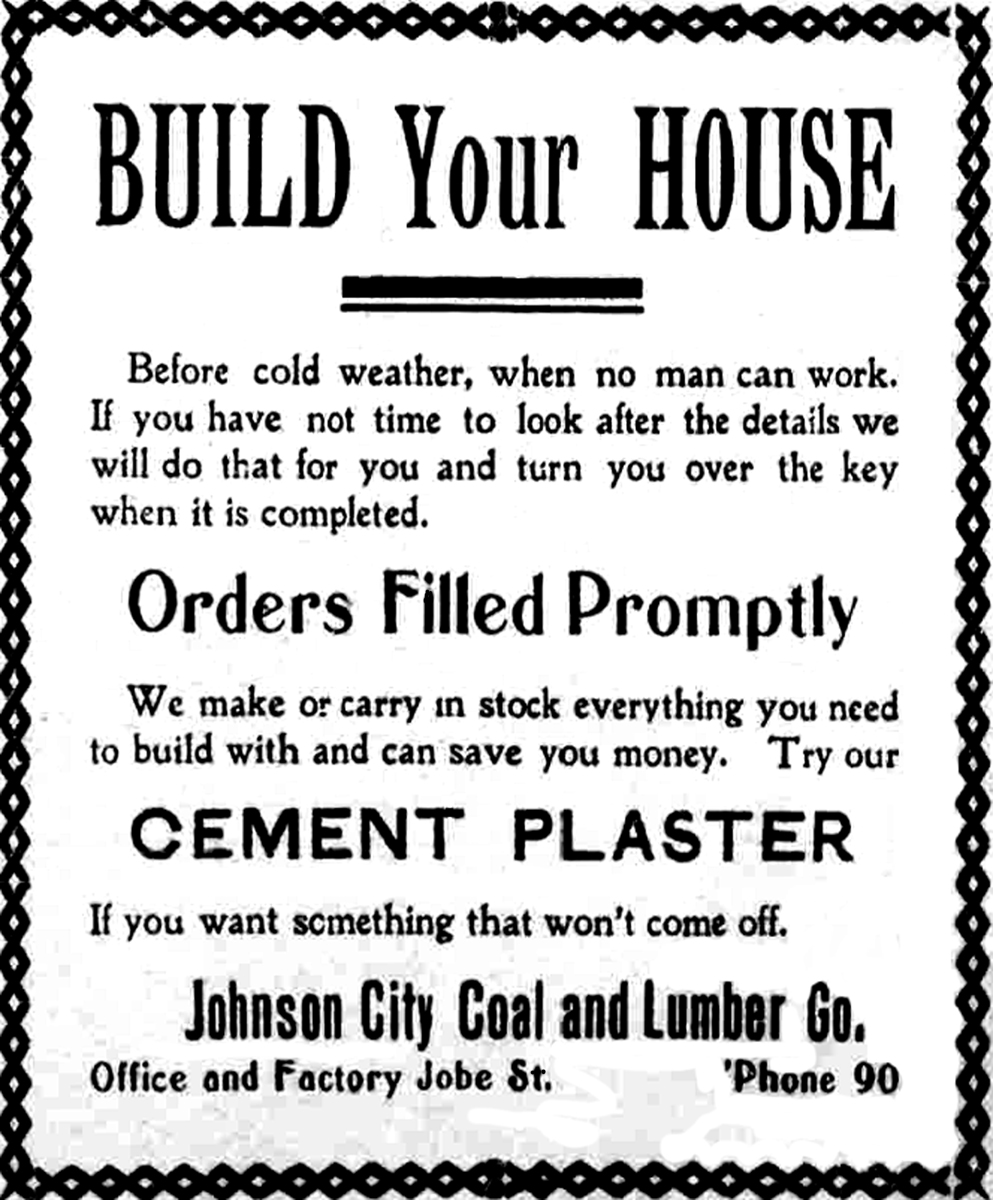
Located on Jobe Street (Central Tobacco Warehouse): Prominent among the thriving and flourishing industries in our city who are enjoying a good trade is the Johnson City Coal and Lumber Co., which was established in 1902. S.R. Sells and L.W. Walsh are the owners of the plant and report business most encouraging from the present outlook. They are wholesale and retail dealers in rough and dressed lumber. They also manufacture and carry in stock at all times including flooring, ceiling, siding, molding, laths, sash, doors and building material.
This progressive and enterprising firm deserves credit for the increase of their last year's business, as a gain of 50 percent is the result since the first of January. Mr. Sells is held in high esteem by our citizens for his business qualifications. The company owns abundant mountain land, including a saw mill at Cranberry, NC. The 24-man workforce has a large payroll each week with a daily capacity of 25,000 feet of lumber.
The City National Bank
Located at 214 E. Main Street (H.E. Hart Jeweler): The City National Bank, a most ably-managed and substantially founded financial institution, is a designated state and city depository, with a national repository as well. The facility is regularly inspected by government agents and, therefore, cannot be otherwise than absolutely safe.
All branches of banking business are most ably conducted, collections are made and approved paper negotiated. Individuals, firms, corporations and banks, carrying accounts with the City National Bank will find their terms most liberal. The bank is equipped with handsome and luxurious furniture, along with fixtures and decorations. Every attention and courtesy is extended to callers.
The top officers are James M. Gaunt, president; J.M. Buck, vice president; and Sam T. Millard, cashier. The capital of this bank is all home capital and the bank is officered by Johnson City citizens.
Steven Brothers
Located at 200 Spring Street, corner of Spring Street and the Narrow Gauge Railroad: The large wholesale produce house of Stevens Brothers is a branch of the Baltimore House that was established in 1898. The business is a large buyer of chickens, eggs and dried fruits, drawing its supplies from all parts of the surrounding country. They purchase only first-class produce, which gives them enormous patronage from the eastern markets. G.F. Hobbs, the local manager, is well-known in Johnson City and vicinity and stands high in public esteem. He has been most zealous in his business duties since he assumed charge, and his efforts have met with the high success which he deserves.


